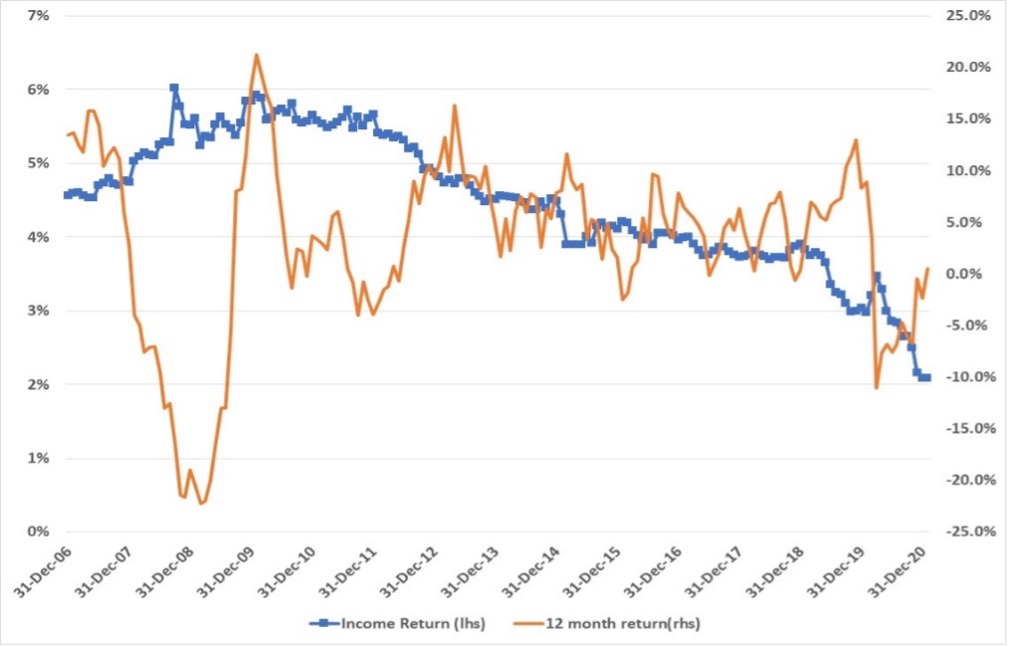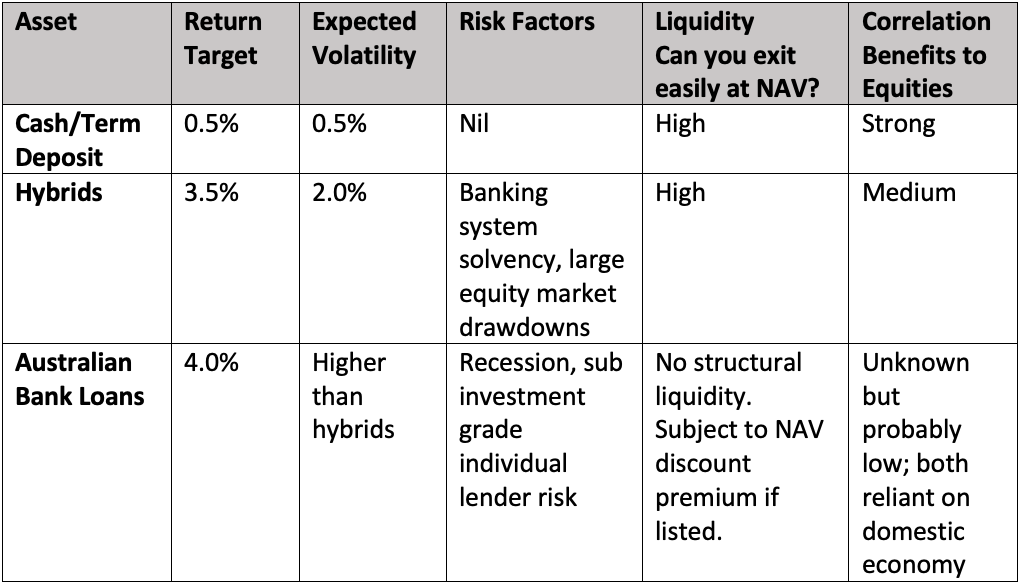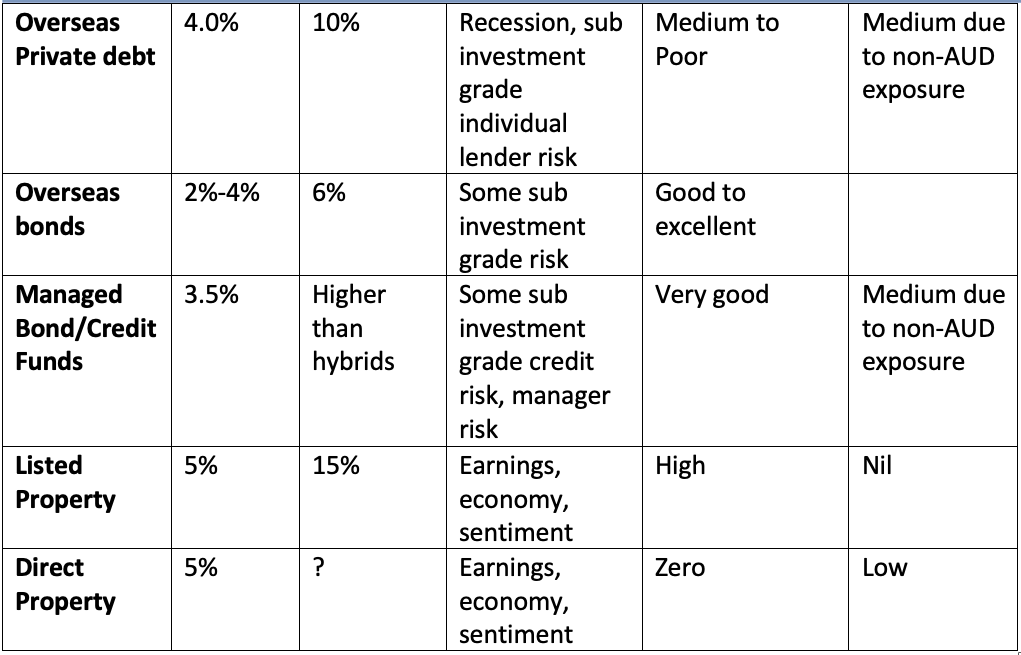How Hybrids fit into 2021 income portfolios
Australian income investors' lives have changed, maybe permanently. The collapse in cash and term deposit rates has made things much harder than it was between 1990 and 2015 - when a portfolio with lots of cash, a few higher-yield equities and some property exposure would deliver returns well above inflation.
But now, simply buying more equities doesn’t work, because volatility goes through the roof
It is still possible to create income portfolios with acceptable volatility, but you must be more diversified. Hybrids are an essential part of building a diverse income portfolio, offering decent returns, muted volatility and good liquidity unmatched by other income and asset classes.
“We have seen better days” (Shakespeare)
Between 1990 and 2015, Australia was the lucky country. High-interest rates made it relatively easy to create income portfolios with good returns and low(ish) volatility. After adjusting for inflation, Australian cash and bonds produced the highest ‘real’ returns in the world for most of the period since 1990.
But running income portfolios became much harder after 2015 when cash and bond rates started to fall. In the chart below we’ve shown the income yield and rolling 12-month return of a typical capital stable/safe income portfolio (50% cash/TD, 30% equities, 20% property).

How good is Australia?
The past 15 years have been great – average income levels were 4% and the annual total return (income plus capital) of the 50%/30%/20% portfolio was around 5.25% a year, including two pretty severe stress events (GFC and Covid-19). Ex-COVID, the portfolio volatility was 5% a year, which meant that capital changes were within the range of +/- 5% for two out of three years. Of course, some years were more volatile than that.
The portfolio got towelled during the GFC, but if you went to sleep often enough in the years after that, you probably didn’t see the portfolio generate a negative return on a rolling 12-month basis until Covid-19, and even after that, it’s now back to a flat return for the year.
But income has halved … and investors can’t cut spending by 50%
The income yield on the previously impeccable income portfolio is now less than 2%, down from the previous decade average of more than 4%. The obvious dilemma is that investors can’t cut their spending by 50%, so they either need to start eating into capital or take on more risk in an attempt to generate previous income levels.
We’ve highlighted the dilemma by showing what happens to the previously effective TD/Equity/Property portfolio when you increase the equity component to generate higher income. To get to a 3% income return, you need to increase risk materially. It’s a big jump for most investors to almost double their risk tolerance, so there has to be a better solution.

Uncomplicated portfolios don’t work anymore
The solution is more difficult because investors need to buy more stuff. It’s not going to be as familiar as the old portfolio and has different risks to watch out for.
We don’t think there are any magic solutions. Investors need to take on more risk, but they need to do it more sensibly than just buying more equities because even ‘defensive equities’ lost 35% in the Covid-19 downturn.
Diversify and get the free lunch
It is one of the wonders of investment science that you can mix a bunch of higher return but risky assets but if they are not exactly correlated, you end up with a portfolio that’s not as risky as you might think.
For example, combining non-AUD equities with AUD equities produces a portfolio with around 30% less volatility than each individual asset class.
Diversification is the biggest free lunch an investor will ever get. We think investors should use this free lunch concept to combine a range of income type investments with a range of return and risk profiles and let the correlations work for you.
The table below shows a range of asset types with their return and expected volatility. What should be immediately apparent is that there is a range of assets that sit in the midpoints between term deposits (which are risk-free) and Equities (which are definitely not risk-free).
A combination of these asset classes increases the return above a Term Deposit exposed portfolio, but the risk and the correlation benefits result in a less risky portfolio than jumping to a higher equity position.


So, how does it look in practice?
We created a portfolio with 10% cash holdings 20% Hybrids and the balance evenly split between the other 8 asset classes mentioned above. Only 35% was allocated to equity and property. We’ve detailed the return and volatility of the portfolio on the table below and compared them to the “capital stable” of the last decade.

It’s interesting to note (with the caveat that we have made assumptions about volatility and correlations) that if you diversify your income sources, you can create a 4% income portfolio while still having an acceptable amount of volatility. The previous optimal portfolios either produce less income with the same risk, or the same income with more risk. Neither are particularly palatable outcomes.
The one trade-off is liquidity. Most previous income portfolios were very liquid with up to 90% invested in cash and term deposits and with lots of that in TDs which are able to liquified at face value.
The more diversified portfolio has a greater proportion of assets in classes that are either less liquid or more volatile, so selling in crisis results in a discount.
The liquid, non-volatile component is around 30% of the portfolio (cash and hybrids) with a further 25% in listed equities and listed property, which are liquid but maybe not at close to face value.
Why are Hybrids so important?
Hybrids are really important in new age income portfolios for two main reasons:
- They are about the next asset out on the risk spectrum from cash/bonds, but still offer an increase in income of around 3%.
- Unlike most of the asset classes mentioned above, Hybrids have very little default risk because the issuers are investment grade and unlikely to get into trouble. Most of the other asset classes have sub-investment grade exposures and they default far more frequently. It’s not immaterial. If you owned 100 companies with the Hybrid markets credit rating, less than one would have defaulted after 5 years (on average). The comparative for a sub-investment grade bond loan or fund is around 10 or 11 companies defaulting in over a 5-year period.
- Hybrids are liquid. Other income assets are either do not freely trade or are subject to price and liquidity problems under stress.
The liquidity benefit is particularly important in a portfolio which is trading off liquidity for return.
Not already a Livewire member?
Sign up today to get free access to investment ideas and strategies from Australia’s leading investors.
2 topics

